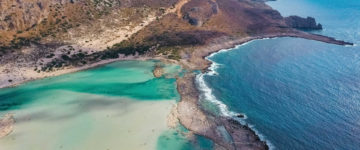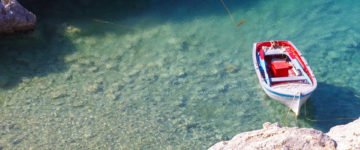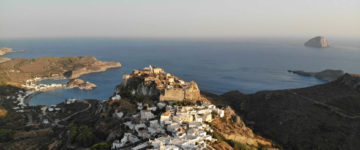
Kalymnos, this rugged place of vertical cliffs is attracted by hardy climbers from all over the world. Turquoise bays is soaked in the sea, indeed from the mermaid on the point and statue of Poseidon in the harbour, to its rich history of sponge diving, Kalymnos is tied to the deep. There are a lot of damaged old lungs in town but the islanders are proud of their tenacity as hardy sponge divers. Even today, scattered about the capital of Pothia, you’ll find old sponge warehouses stacked to the gills with these unearthly marine treasures.
Unlike some of its neighbours, Kalymnos is comparatively green, its roads lined with pink oleanders contrasting with brilliantly blue water. Local gastronomic treats include octopus in ouzo and spinialo a traditional taste of Kalymnos.
Kalymnos is the third-largest island in the Dodecanese with an area of 134.5 square kilometres. Kalymnos essentially consists of two cultivated, inhabited valleys sandwiched between three limestone ridges, harsh in the full glare of noon but magically tinted towards dusk.
The climate is claimed to be dry and healthy since the quick-draining limestone strata, riddled with caves, doesn’t retain as much moisture. This rock does, however, admit seawater, which has tainted Pothia’s wells; drinking water must be trucked in from the Vathýs valley, and there are also potable springs at Kamari, Potami district of Pothia and Hora.
Despite its hostile geology, Kalymnos’s position and excellent harbours ensured its prominence from ancient times, especially during the Byzantine era, and there are more ruined early basilicas here than on any other island in the Dodecanese. Another local Byzantine legacy is the survival of peculiar medieval names (eg Skevos, Sakellarios and Mikés for men, Themelina, Petranda and Sevasti for women) found nowhere else in Greece.
The capital of Kalymnos, Pothia, without being conventionally picturesque, is colourful and authentically Greek, its houses marching up the valley inland or arrayed in tiers along the surrounding hillsides. With nearly 16,000 inhabitants, it has overtaken Kos Town as the second-largest Dodecanesian municipality after Rhodes Town, and your first impression may be of the phenomenal noise engendered by motorbike traffic and cranked-up sound systems of the half-dozen waterfront cafes. Things get even louder on Easter Sunday evening, when teams stationed on the heights engage in an organized dynamite-throwing contest, with feasting and general merriment after the inevitable casualties are taken to hospital.
Kalymnos is one of the regional units of Greece which covers the islands of Kalymnos, Agathonisi, Astypalea, Lipsi, Leros, Patmos and several smaller islands in the Aegean Sea. It is part of the region of South Aegean.







